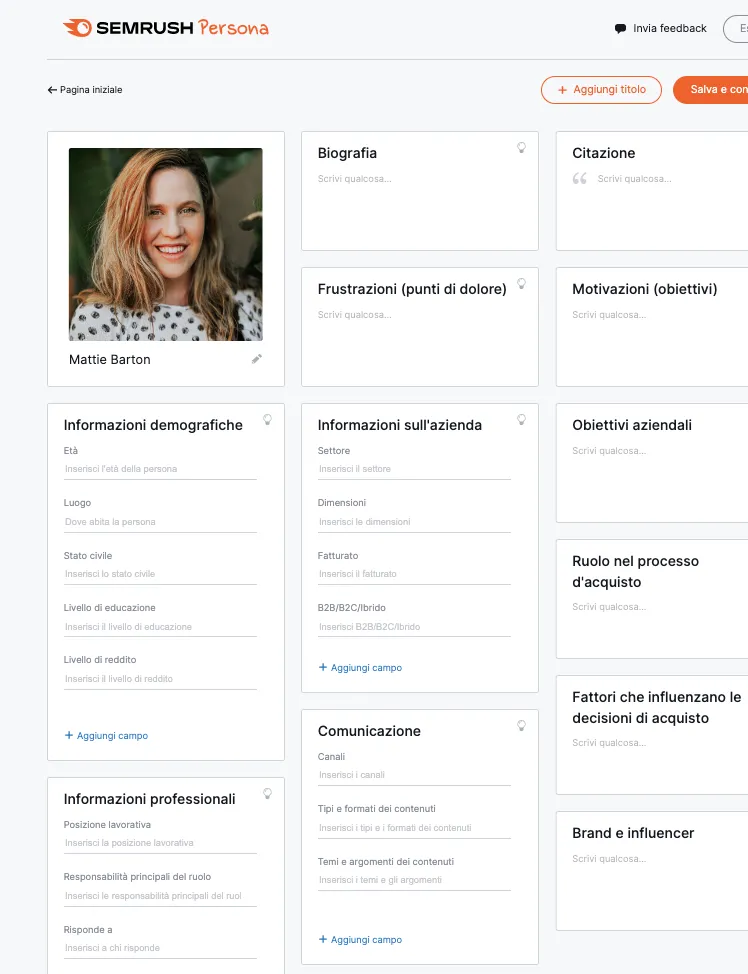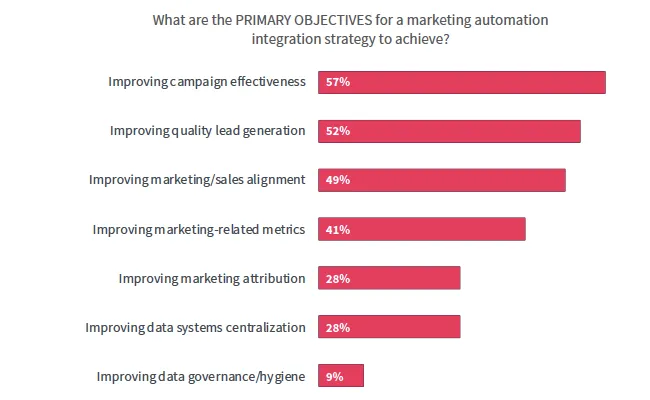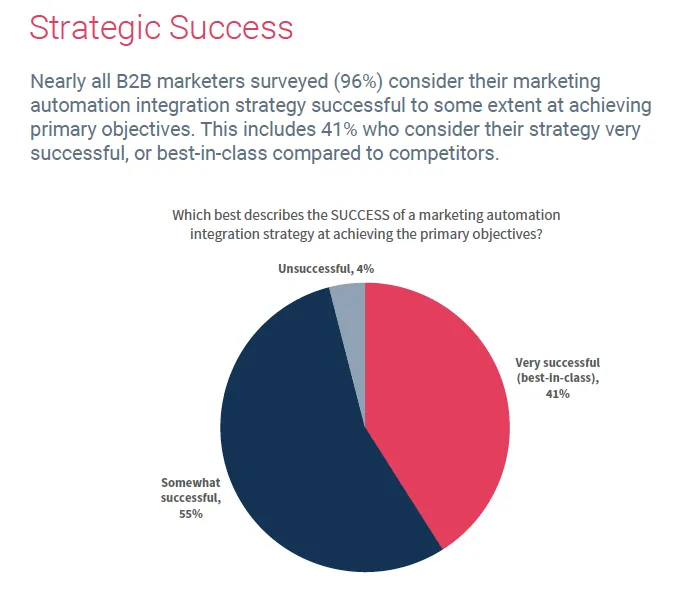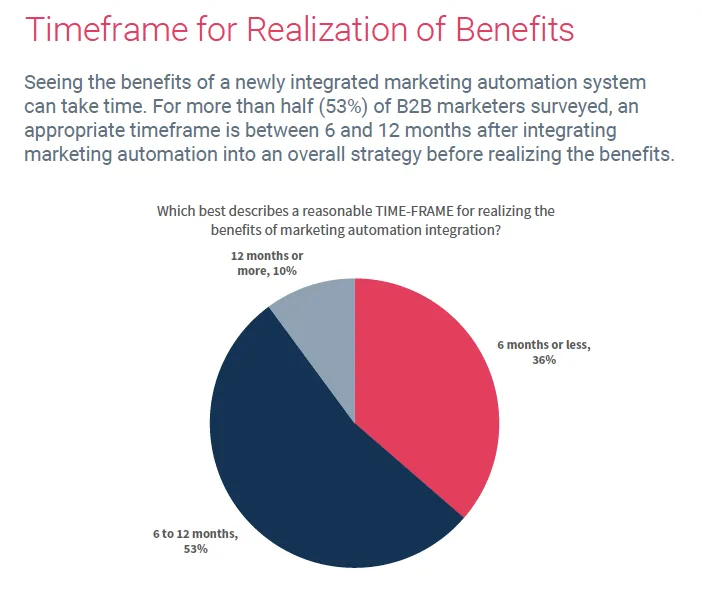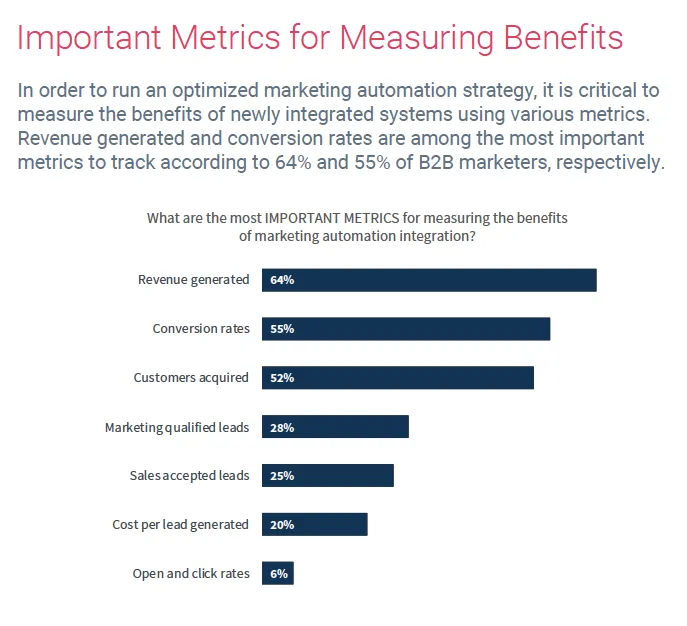Learn a Trade for a Rainy Day!
How important is the USP, Unique Selling Proposition?
Who is the Buyer Persona of your product?
How to measure the Distance from our Goals
The number and the type of KPIs are depending of goals.
In any case the KPIS number ranges from 8 to 40.
Below the list of 37 KPIs…
Monthly
new leads/prospects, Marketing qualified leads (MQL), Sales-accepted leads (SAL), Sales qualified leads (SQL), Cost-per-lead generated, Cost per conversion, Average time of conversion, Attrition rate, Net promoter score, Monthly website traffic, Returning vs. new visitors, Visits per channel, Average time on page, Website conversion rate, The conversion rate for call-to-action content, Click-through rate (CTR) on web pages, Pages per visit, Inbound links to a website, Traffic from organic search, New leads from organic search, Conversions from organic search, Page authority, Google PageRank, Keywords in the top 10 SERP, Rank increase of target keywords, Conversion rate per keyword, Number of unique keywords that drive traffic, The volume of traffic from video content, Leads & conversions from paid advertising, Cost per acquisition (CPA) & cost per conversion, Click-through rate on PPC advertising, Traffic from social media, Leads and conversions from social media, Conversion rate, Managed audience size, Engagement rate, Mentions, Social media ROI.
www.scoro.com
What it is and how to manage it
What is a Digital Marketing Analysis?
Which are the Best Players?
What’s the Lead Generation?
Definition
In marketing, lead generation is the initiation of consumer interest or enquiry into products or services of a business. A lead is the contact information and in some cases, demographic information of a customer who is interested in a specific product or service.
en.wikipedia.org
The first question is “What is the Lead?”
A lead is a person who has expressed his interest in our service by providing us with information on a) his name/nickname, b) e-mail, c) his company name, c) in which sector his company operates and finally d) our product of which he is interested in knowing more details.
The second question is “What is the Lead Gen?”
The lead generation is the process of attracting as many “buyer persona” as possible.
The third question is “How and why can we create the “buyer persona”?
A buyer persona is an abstract representation of the ideal customer, whose name, history, demographic information, motivations, anxieties, goals, position, industry, size, turnover, type of B2B/B2C market, objectives, who influences purchases, which factors influence the purchase.
It would be desirable for this information to come from accurate market research.
Comparing the information of the buyer persona with the lead allows us to measure the probability that the lead can become a customer and consciously decide which investments have a high possibility of ROI.
How can you gather the benefits of Lead Generation?
Leads don’t come from nowhere. They’re everywhere in the digital space, but you need to have a connection if you want to capture them. For this it is necessary to have a lead gen strategy to identify the best channels to capture them.
How can you convert a Visitor in Lead?
What can the best WordPress Plugin do?
Which are the best players?
What’s the Lead Nurturing?
Lead nurturing is the process of developing and reinforcing relationships with buyers at every stage of the sales funnel. A successful lead nurturing program focuses marketing and communication efforts on listening to the needs of prospects and providing the information and answers they need to: Build trust.
What Activities Should you Pursue to Convert Leads?
Lead nurturing does not consider email marketing exclusively, however email marketing activities are in the first place for a good lead nurturing.
In this regard, we propose a very comprehensive post that offers an effective overview of lead nurturing done via email.
It is available for free on leadsbridge.com
Is the Testing Software useful?
Is the lead scoring the best KPI?
What’s the Advocate Marketing?
Customer advocacy is the act of building and nurturing relationships with loyal customers, who then act as spokespeople and champions for your brand, products, or services. This process starts by identifying who those loyal customers are
Which are the Best Players?
Which Benefits can you achieve?
What’s the Affiliate Marketing?
Which are the Best Players?
Which Benefits can you achieve?
What’s the Buzz Marketing?
Which are the best players?
Which Benefits can you achieve?
What’s the email Marketing
Consistent Benefits of Email Marketing
formatting
How important is the format of the email when we want it to be perceived in the same way on a mobile phone or on a desktop that is practically double the width?
images
Did you know that it is necessary to stay in a ratio of 70% text and 30% image to prevent emails from being filtered by antispam systems
And this is not the only constraint!
Call to action
It is the most important button of the email because in the hope that this button is pressed an email marketing campaign is launched. It is in fact one of the most important KPIs for measuring the goodness of the campaign.
What do you need to watch out for with this button?
Typography
Which typefaces to use so that they are definitely available on the target device?
What kind of typefaces have better readability?
What perceptions are triggered by one typeface rather than another?
Does it make sense to use an emulation service of the possible and most common arrival devices?
Coding
Not all devices behave the same for the same HTML and CSS.
Responsive design
Litmus is a web service that allows you to emulate hundreds of arrival devices and therefore it is possible to test only those few that represent 90% of the global audience.
However, 90% of today is not represented by the same devices in 6 months!
template
It is necessary to create a mosaic of bookcases to be used over time to make the message and the brand new and yet always solidly linked to the characteristics of the brand and the original design.
Monitoring which template has the most appeal is another challenge that requires A/B testing and multivariate testing techniques
Interactivity
Interactivity is based on three aspects: being able to modify the information inside an email in real time, being able to send information from an email, and being able to show content dynamically.
In 2019, Google announced the launch of AMP for email, an open-source technology to add interactivity into campaigns. Using the example email from Doodle below, we can see that this technology allows the user to select a time slot for a meeting without leaving the email. Given that it was abandoned by Microsoft and that email routers have to modify their systems to be able to send messages in AMP.
Many email designers are wondering whether this technology will really be used more widely.
Email Marketing Calendar
Planning a campaign also requires calendar control.
Attached is an example produced by mailjet. But every email marketer has to create their own calendar
assets.ctfassets.net
Deliverability
The basics of deliverability could be learned from an attached document produced by mailjet. It is from 2021 which in practice is an old generation but sufficient to have an overview on the subject.
www.mailjet.com
What Risks do you Have to Watch out for?
Deliverability definition
Why categorize the email type?
What’s the Event Marketing?
What is the best road map?
Which benefits can you achieve?
Inbound marketing is probably the most powerful strategy at your disposal right now, helping you cut through the noise and get discovered by your target audience. So how do you take advantage of that and make inbound marketing work for your event?
When can you use not-your own lead list?
Lead lists should not be bought because they are ancient to the GDPR and anti-spam systems are very advanced therefore the IP address from which the emails start will almost certainly and immediately enter the blacklists.
The lead lists that can be used are those provided by the trade fair organizations in which you have participated.
And in this case the first email must be sent by those who have collected the consent on privacy, precisely the trade fair organizations.
It is important to reiterate that only those who have collected the consent on privacy can send emails. At the most it can promote your service.
What’s the Marketing Automation?
Which are the best players?
Which benefits can you achieve?
What’s the Mobile Marketing?
Which are the best players?
Which benefits can you achieve?
What’s the Moment Marketing?
Which are the best players?
Which benefits can you achieve?
What’s the Neuro Marketing?
Which are the best players?
Which benefits can you achieve?
The following five neuromarketing principles, when put into practice, will boost your marketing and advertising campaigns.
The following five neuromarketing principles, when put into practice, will boost your marketing and advertising campaigns.
1. Familiarity, User Experience, and Content
“Most neuroscientists would agree that well over 90% of our behavior is generated outside of consciousness. We are more slaves to our biology than we realize. Our rational minds represent a very small layer floating atop a vast well of unconscious drivers. Business leaders who understand biological programming and can leverage it possess an enormous advantage,” explains neuroscience business expert Janet Crawford in an interview.
www.forbes.com
2. Reciprocity
People often feel obligated to pay back favors and debts, no matter how little, both because of societal norms and innate behavior. This phenomenon is termed reciprocity.
When somebody does something good for another, that other person often feels a desire to repay.
Applying this principle is simple: Give something of value to your customers without any stated expectation of getting something back.
3. The Scarcity Principle
It is typical of people to desire something they can’t have. Similarly, when a product or service is in short supply, potential buyers feel a sense of urgency to buy it before it becomes unavailable. This principle works both when there’s a supply scarcity and when a deadline limits access.
Research by Ratner and Zhu has found that when consumers have the impression that products are scarce, they discard their decision-making choices and gather more quantities of their favored product. However, when the consumer thinks that there’s a surplus of each product, the consumer branches out, getting both a number of the favored product and a varied collection of other available products.
4. From Flattery to Liking
There’s one thing that can regularly make the difference between a successful sale and a failed one: the liking effect. In short, people are more apt to say yes to a person (or to a product/service) if they like that person or offering.
One approach is flattery—using pleasing compliments—to persuade people to buy a product or service.
Flattery has been proven very effective in marketing. Elaine Chan and Jaideep Sengupta, professors of marketing at the Hong Kong University of Science and Technology, have found that even insincere flattery works in marketing.
5. ‘Anchoring’ for Boosting Conversion
Anchoring happens when people use an initial piece of information as the basis for making subsequent judgments. For your customer, the anchor is the point of reference against which all other products, offers, or prices are compared. Once the anchor is set, there is usually a bias toward that value.
An example of anchoring and adjustment as a sales technique would be if a used-car salesman (or any salesman) were to quote a very high price to start negotiations. Because the high price is the anchor, the final price will tend to be higher than if the car salesman had offered a fair or low price to start. There are many examples of the anchoring principle at work.
Businesses can make use of the anchoring effect in marketing to take advantage of this quirk in the human mind that has people making judgments based not on fundamental value but on impressions prejudiced by initial reference points—anchors.
What’s the Programmatic Advertising (RTB)?
Which are the best players?
Which benefits can you achieve?
What’s the Reputation Marketing?
Which are the best players?
Which benefits can you achieve?
What’s the SEM-Pay Per Click Marketing?
Basic concept and Glossary
Click-Through Rate
The click-through rate (CTR) is a measure of the effectiveness of your PPC campaign and is determined by dividing the number of clicks you receive by the number of impressions. CTR is also used to determine the quality score of a keyword. With high CTRs and quality scores, you can achieve a higher ad position at a lower cost.
Conversion
This is an action that a user undertakes on your site, which you deem to be more valuable than them simply visiting and leaving. Often referred to as ‘goals’, conversions include fi lling in web forms, downloading ebooks, watching videos, following social network profiles, and, of course, making purchases.
Conversion Rate
The conversion rate is one way of evaluating the performance of your PPC campaign. It can be calculated at the keyword, ad, or landing page level, and is done by dividing the number of conversions by the number of clicks.
Impression
The term impression refers to an individual placement of an ad on a page, be it on a search engine or a social networking site.
An impression is an estimate of the number of people a particular advertisement is reaching. You can count it in different ways depending upon how the ad is situated on the page and the number of times the web page where the ad appears is shown. Ad reports list the number of impressions of the ad, which basically counts the number of times that the ad was served by the search engine when people searched for keywords related to the ad.
CPM
CPM stands for cost per thousand Impressions (the M is the Roman numeral abbreviation for 1,000). Actually, CPM is one of the most common ways of buying digital media. You essentially pay CPM every time your ad loads on a page or in an app.
CPC
CPC stands for cost-per-click advertising. Here the advertiser pays whenever people click on their ad. Some advertisers prefer to buy CPC versus CPM because they believe they only pay when someone is interested enough in the message to want more info.
CPL
CPL is short for cost per lead, meaning that the advertiser pays when a lead form is completed and submitted. Keep in mind that CPL is common in B2B marketing, where it is unlikely that someone will make a purchase immediately.
CPA or CPS
Cost per acquisition or cost per sale. Here the advertiser pays only if a purchase is made. This is a relatively low-risk way to buy media because the advertiser only pays when revenue is driven.
CPI
In mobile app marketing, CPI refers to media programs where the advertiser pays for every installed app. Lots of app marketing is purchased CPI because it is a fast way to drive installs.
Quality Score
A quality score is a rating of the relevance of your ads and is higher if you bid on terms that are relevant to your site. Your quality score also increases when you bid on keywords that are present on your landing page. Higher quality scores result in high ad positions, encouraging advertisers to only include relevant information and avoid spamming.
ROAS
This acronym stands for Return on Ad Spend and is similar to ROI, as it is the revenue generated for each pound you spend on ads. It is sometimes used to compare the performance of two different advertising strategies. Understanding your ROAS can be very important when trying to understand the overall profitability of a given marketing strategy or campaign.
Bids
Most advertising platforms employ a bidding strategy for their adverts. That means that multiple advertisers will be bidding on a keyword, and the ones willing to pay the most will have their advert shown. Other factors like the quality of the advert and click-through rate also play a factor in this. But, it is important to understand that you are, in essence, entering an automated auction when deploying your budget for adverts.
Remarketing
Remarketing is a clever way to connect with visitors to your website who may not have made an immediate purchase or enquiry. It allows you to position targeted ads in front of a defined audience that had previously visited your website – as they browse elsewhere around the internet. Most of the time, this is on either Facebook or websites running Google adverts.
By www.munro.agency
Which are the best players?
Which benefits can you achieve?
How is semiotics used in marketing?
Which are the best players?
Which benefits can you achieve?
What’s the Social Media Marketing?
Which are the best players?
Which benefits can you achieve?
What’s the Virtual Event Marketing?
Which are the best players?
Which benefits can you achieve?
What’s the Website Visitor Tracking & Web Analytics?
Which are the best players?
Which benefits can you achieve?

